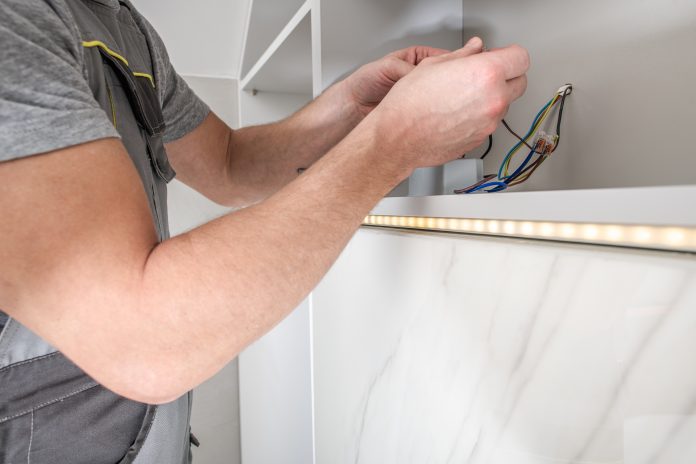James Bennett, commercial director of systems and services at Signify UK & Ireland, explains why switching to energy-efficient connected LED lighting will help countries meet their net zero targets
As the climate crisis intensifies, every business needs to step up and play its part to cut carbon emissions. In the approach to the UN’s COP26 Climate Change Conference, a sense of impatience has echoed across nations The clock is ticking and the world is warming. There’s a widespread sense of unrest that calls for action to minimise and avert the damage we as human beings have caused to the planet we share.
Signify, (formerly Philips Lighting), has made its call to action many times before: we need actions, and we need them yesterday. As the world leader in lighting, our role is not just to operate responsibly, but to help our stakeholders play their part in minimising the impact of climate change.
Picking up the pace
First and foremost, we need to accelerate the switch towards energy-efficient connected LEDs. This is a simple but significant step that will contribute to countries meeting their targets to reduce emissions by at least 55% by 2030.
Globally, switching the 5.6 billion conventional light points in the global professional market to LED could save around EUR 177 billion and eliminate 553 million tonnes of CO2emissions every year. For the United Kingdom and Ireland (UK&I) region, switching to LED lighting in the professional lighting market could reduce CO2 emissions by 3.9 million tonnes in, the number of emissions that 175 million trees could sequester in a year. Making the switch would also generate electricity savings of 16.1 TWh, which is equivalent to the annual electricity consumption of more than 4.3 million households. This would mean a saving of EUR 3.8 billion on electricity costs.
This isn’t rocket science. Today, lighting accounts for about 12% of our global electricity consumption a year. By moving to more energy-efficient LED lighting, we can drop this to 8% by 2030, even while the total number of light points continues to rise. It’s a fast, non-disruptive intervention that can act as a frontrunner as we accelerate preparations for more complex renovations.
The switch to LED is just one part of the puzzle. The new generation of LED is not just energy efficient but connected. Connecting LED lighting to a network and introducing sensors and controls further enhances their efficiency while laying the groundwork for a digital smart building framework that brings together multiple functions and applications.
Boosting the renovation rate
In professional lighting, the outlook shows that most opportunity is still ahead of us, as two thirds of the installed base is still conventional lighting technology, according to the IRENA. This means that we need to speed up renovation within commercial and industrial sectors as well as within housing, retrofitting older consumptive systems with more energy-efficient connected LED installations, and do it by 2030. A fundamental part of this transition is to more than double the annual rate of building renovation to 3% per year.
Converting to connected LED lighting has the power to reduce the built environment’s lighting-related energy consumption by up to 80%. It will also deliver carbon reductions and reduce costs. It will improve the comfort of those using the building. And it will accelerate the adoption of smart technologies by governments, in industry, and in households across the world, reaping benefits in productivity, health, wellbeing, and digital innovation.
Verticals such as Manufacturing can save 1.1 million tonnes of CO2 which equates to over €1.1bn. Warehouses in the UK&I region can save 131.5 thousand tonnes CO2 which equates to over €130m, if these industries were to retrofit and switch all conventional luminaires to LED lighting.
Another significant advantage of connected LED lighting is the access to data that allows businesses to go beyond just illumination and really harness the value from light. This data can help businesses and offices better manage infrastructure and space. This means using occupancy insights to see where and how people prefer to work, opening to the potential for energy and space savings, asset tracking & environmental sensing.
Furthermore, smart sensors in light fittings can gather data from the building, e.g. occupancy data can be gathered & used to improve and optimise space utilisation in a multi-tenant office or it can help to reduce picking times in warehouse. These additional benefits and savings help to contribute to the overall operational efficiency of a company/site.
To achieve this, we need nations around the globe to revise their buildings codes and set high standards in the materials that are used, and the energy buildings consume, not just in our new buildings, but in our existing building stock, too.
Racing to zero
COP26 has called for accountability on emissions reductions targets and for fast action to avert, minimise and address the loss and damage that is already occurring from climate change.
For us, this is more than clever speak: we have committed to playing our role and adapting our business strategy to put our impact as an environmentally responsible organisation at the very heart of our business strategy. This is how we achieved carbon neutrality for all our operations in September 2020 and outperformed on many of our other sustainability commitments.
Changing how we run our company is a driver for growth. It’s also a commitment to working with our clients and our partners, whether they be corporations, governments, educational establishments or consumers, to make the lighting industry a force for positive environmental change.
After all, it takes all of us to win the Race to Zero.

















